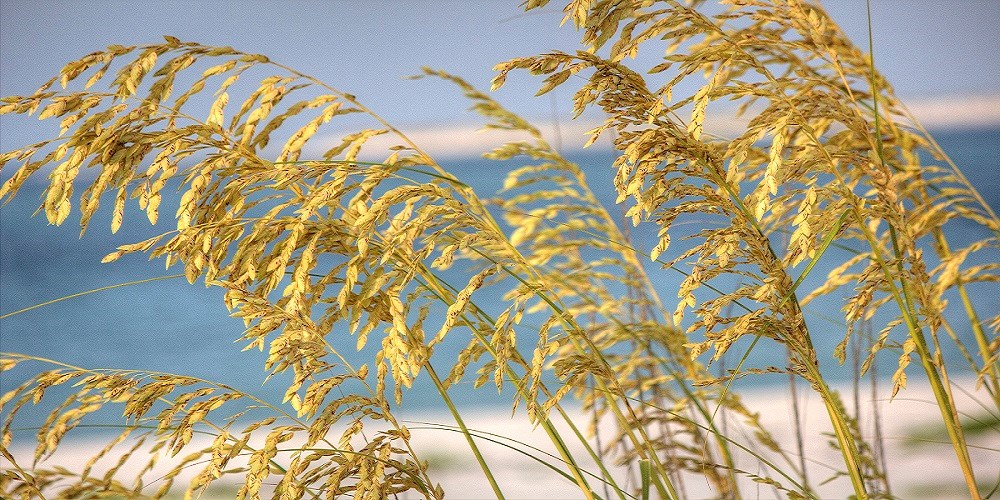
NPS/McDonell
Named for its appearance, rather than its relationship to traditional oats, sea oats are vital building elements of the dune structures at Gulf Islands National Seashore. Sea oats are a perennial grass and one of the most important pioneer species for foredunes. Growing up to six feet in height with leaves up to two feet in length, sea oats are hard to miss in the dune ecosystem. Considered a warm season grass, they’re a hearty species able to survive the often harsh conditions along the coasts, because they are tolerant of salt spray and the occasional salt water inundation. Sea oats thrive on lots of sun and blowing sands which helps to stimulate the plant’s growth.
They can be found along the east coast of the United States from Virginia to Florida, and along the Gulf Coast including portions of Mexico, Bahamas and portions of Cuba.
One of the biggest benefits of sea oats is its massive root system (up to 30ft in length). It helps protect coastlines and barrier islands because the roots are capable of holding sand and soil in place during tropical storms and hurricanes. Another important function of sea oats is that they catch blowing sand and build sand dunes. Sea oats also serve as a food source and shelter for various shore birds, songbirds, and small animals like the Perdido Key Beach Mouse (Peromyscus polionotus trissyllepsis). These qualities make sea oats critical at the national seashore, building and stabilizing the many dunes located on park islands and providing nutrients to park wildlife. To enjoy dune plants and sea oats please do not remove sand from around them, be careful to not walk on vegetation, and leave the sea oats undisturbed for others to see and enjoy.
Shadow, R. A. (2007, October). Plant Fact Sheet. Sea Oats. Nacogdoches, Texas, United States: Natural Resources Conservation Service, U.S. Department of Agriculture. Miller, D. L., Thetford, M., Dupree, J., & Atwood, L. (2014). Influence of Seasonal Changes and Shifting Substrate on Survival of Restoration Plantings of Schizachyrium maritimum(Gulf Bluestem) on Santa Rosa Island, Florida. Journal of Coastal Research, 294, 237-247.
|
Last updated: June 15, 2020
